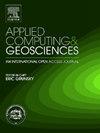结合神经符号人工智能和知识图谱增强铜矿地球化学预测
IF 3.2
Q2 COMPUTER SCIENCE, INTERDISCIPLINARY APPLICATIONS
引用次数: 0
摘要
地球科学中机器学习(ML)和深度学习(DL)的整合在矿物预测方面显示出巨大的前景。然而,现有的方法主要是数据驱动的,往往忽略了专家地质知识,限制了它们的可解释性、准确性和实际适用性。本研究提出了一种结合大语言模型(LLMs)、知识图(KGs)和神经符号人工智能(NSAI)模型的新方法,用于预测不同铜矿床的矿化系统,显著提高了预测结果的精度。我们利用llm从地质文献中生成KGs,提取编码有关铜矿化的特定领域见解的符号规则。这些从专家知识中动态导出的规则在训练和预测阶段被集成到机器学习模型中作为指导。通过将符号推理与机器学习的计算能力相融合,我们的方法克服了黑箱模型的局限性,提高了矿物预测的准确性和透明度。为了验证该方法的有效性,我们将其应用于全球铜矿床地球化学综合数据集。结果表明,规则导向的机器学习模型取得了显著的性能改进,在准确性、精密度和鲁棒性方面优于传统的机器学习方法。通过使用SHAP值等工具进一步提高了可解释性,这些工具可以在基于规则的框架内解释单个地球化学特征的影响。这种组合不仅确定了关键的地球化学元素,如Cu、Fe和S,而且还为预测的矿化模式提供了连贯的、域对齐的解释。我们的研究结果证明了结合llm、kg和ML模型进行矿物预测的变革潜力。这种混合方法使地球科学家能够利用计算和专家知识,对成矿系统有更深入的了解。本文章由计算机程序翻译,如有差异,请以英文原文为准。
Integrating neuro-symbolic AI and knowledge graph for enhanced geochemical prediction in copper deposits
The integration of machine learning (ML) and deep learning (DL) in geoscience has demonstrated great promise for mineral prediction. However, existing approaches are predominantly data-driven and often overlook expert geological knowledge, limiting their interpretability, accuracy, and practical applicability. This study introduces a new method that combines Large Language Models (LLMs), knowledge graphs (KGs), and Neuro-Symbolic AI (NSAI) models to predict mineralization systems in diverse copper deposits, significantly increasing the precision in prediction results. We utilize LLMs to generate KGs from geological literature, extracting symbolic rules that encode domain-specific insights about copper mineralization. These rules, derived dynamically from expert knowledge, are integrated into ML models as guidance during the training and prediction phases. By fusing symbolic reasoning with ML's computational power, our approach overcomes the limitations of black-box models, offering both improved accuracy and transparency in mineral prediction. To validate this method, we apply it to a comprehensive geochemical dataset of global copper deposits. The results show that rule-guided ML models achieve notable performance improvements, outperforming traditional ML methods in accuracy, precision, and robustness. Interpretability is further enhanced by using tools such as SHAP values, which explain the influence of individual geochemical features within the rule-based framework. This combination not only identifies critical geochemical elements like Cu, Fe, and S but also provides coherent, domain-aligned explanations for the predicted mineralization patterns. Our findings demonstrate the transformative potential of combining LLMs, KGs, and ML models for mineral prediction. This hybrid approach enables geoscientists to leverage both computational and expert knowledge, achieving a deeper understanding of mineralization systems.
求助全文
通过发布文献求助,成功后即可免费获取论文全文。
去求助
来源期刊

Applied Computing and Geosciences
Computer Science-General Computer Science
CiteScore
5.50
自引率
0.00%
发文量
23
审稿时长
5 weeks
 求助内容:
求助内容: 应助结果提醒方式:
应助结果提醒方式:


